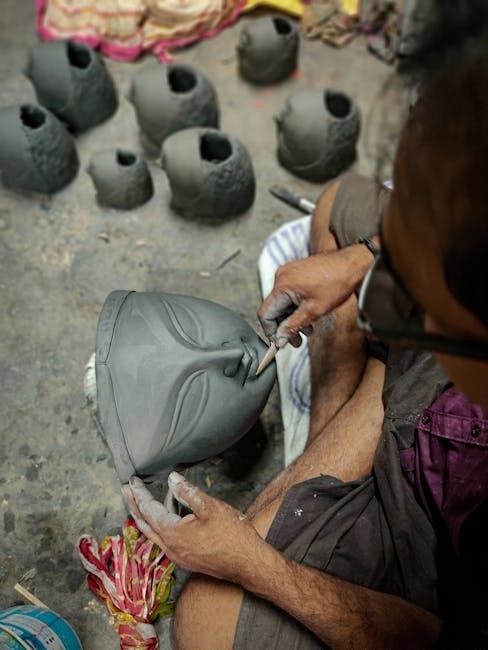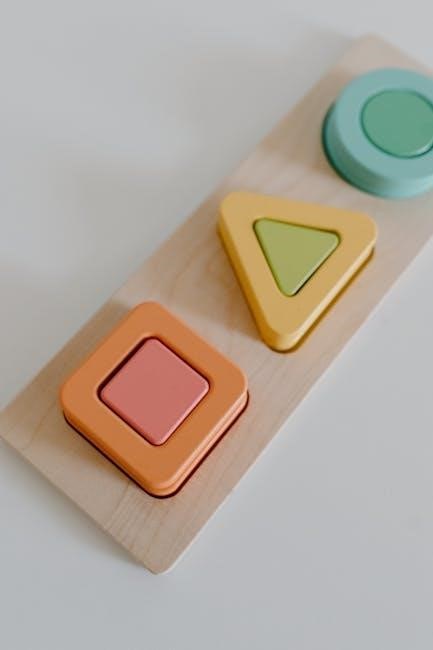The Nortel Networks T7316E is a advanced business telephone designed for efficient communication. Featuring a backlit display, navigation keys, and robust call handling capabilities, it enhances productivity in office environments.
Brief History and Development
The Nortel Networks T7316E phone was developed as part of the Norstar and Business Communications Manager (BCM) systems. Initially released in the late 1990s, it became a cornerstone in Nortel’s portfolio of business telephones; Known for its durability and advanced features, the T7316E was widely adopted in enterprise environments. Following Nortel’s acquisition by Avaya in 2009, the phone continued to be supported, ensuring its relevance in modern communication systems.
Key Features and Benefits
The Nortel T7316E offers advanced call handling, including hold, transfer, and conference capabilities. Its backlit LCD display ensures clear visibility, while navigation keys simplify feature access. Integrated hands-free functionality enhances convenience, and compatibility with Norstar and BCM systems ensures seamless integration. The phone’s durability and user-friendly design make it a reliable choice for business environments, improving efficiency and communication quality.
Installation and Setup Guide
Unbox and connect the Nortel T7316E, ensuring all cables are securely attached. Power on the phone and follow the on-screen prompts for initial configuration.
Unboxing and Initial Setup
Unbox the Nortel T7316E phone, ensuring all components are included. Connect the handset, headset, and power cables. Plug into a power source and wait for boot-up. Use the navigation keys to select language and time settings. Follow on-screen prompts for initial configuration. Ensure proper placement for optimal performance and accessibility.
Configuring Basic Settings
Access the phone menu by pressing Menu and navigate to Settings. Adjust the date and time, volume levels, and display contrast. Select ring tones and set up voicemail access. Save changes to ensure proper functionality. Refer to the user manual for detailed guidance on customizing these settings to meet your specific needs.
Basic Features and Functionality
The Nortel T7316E offers essential features like call management, voicemail, and hands-free functionality, ensuring efficient communication tailored to business needs and user convenience.
Call Handling and Management
The Nortel T7316E offers advanced call handling features, including call transfer, hold, and conferencing. Users can easily manage multiple calls with intuitive controls. The phone supports call parking, allowing calls to be held and retrieved from other extensions. Visual indicators and on-screen prompts simplify call management, ensuring efficient communication. Integration with voicemail and other systems enhances overall functionality, making it a robust tool for business environments.
Navigating the Phone Interface
Navigating the T7316E is straightforward with its intuitive interface. The backlit display provides clear visual feedback, while navigation keys allow easy access to menus. Soft keys enable quick actions, and the phone’s logical layout ensures seamless operation. Users can effortlessly scroll through options, access features, and adjust settings, making the interface user-friendly and efficient for daily communication needs.
Advanced Programming and Customization
The T7316E offers advanced programming options for tailored functionality. Users can customize settings like call forwarding, speed dials, and system locks to meet specific business needs efficiently.
Customizing Phone Settings
Customizing the T7316E involves accessing its programming mode to modify settings like time, date, and feature configurations. Users can adjust preferences such as ring tones, volume levels, and display contrast. The phone also allows setting up speed dials and call forwarding options. Ensure changes are saved correctly to maintain functionality. Refer to the user manual for detailed steps to avoid errors during customization.
Setting Up Voice Mail
To set up voice mail on the Nortel T7316E, access the phone’s programming mode and navigate to the voice mail menu. Enter the voice mail pilot number and ensure the feature is enabled. Some configurations may require system passwords or administrator access. Refer to the user manual or contact support for specific guidance, as settings may vary based on your system’s programming.
Troubleshooting Common Issues
Troubleshooting the Nortel T7316E involves identifying common issues like connectivity problems or incorrect settings. Check all connections, review error messages, and consult the user manual for solutions.
Identifying and Resolving Common Problems
Common issues with the Nortel T7316E include incorrect time settings, forgotten passwords, and error messages. To resolve these, check connections, review user manuals, and reset settings. For time changes, access system programming. If issues persist, contact Nortel support for assistance. Ensure all features are properly configured to avoid operational disruptions.
Understanding Error Messages
When encountering errors on the Nortel T7316E, messages like “Needs Password” or “Time Incorrect” indicate specific issues. These often relate to system settings or user configurations. Check connections, review error descriptions, and consult the manual for troubleshooting steps. Resetting settings or re-entering credentials may resolve the issue. Refer to official guides for detailed solutions to ensure proper functionality and minimize downtime.
Maintenance and Care Tips
Regularly clean the phone using a soft cloth and mild detergent. Avoid harsh chemicals. Check for dust buildup in ports and handsets to ensure optimal performance.
Cleaning and Sanitizing the Phone
Use a soft, dry cloth to wipe down the phone’s exterior, keypad, and display. For tougher stains, dampen the cloth with mild detergent, avoiding harsh chemicals. Sanitize using 70% isopropyl alcohol on a microfiber cloth, gently cleaning all surfaces. Avoid liquids directly on openings or electrical components. Regular cleaning ensures hygiene and prevents germ buildup, especially in shared environments.
Performing Regular Hardware Checks
Inspect the handset, keypad, and display for damage or wear. Check all cables and connectors for secure connections. Test the phone’s functionality by dialing a test call. Ensure all buttons and navigation keys respond correctly. Regular hardware checks help prevent issues and ensure optimal performance. Replace any damaged components promptly to maintain reliability and extend the phone’s lifespan.
Compatibility with Other Systems
The Nortel T7316E is compatible with analog and digital extensions, supporting voice compression and integration with Business Communication systems for seamless connectivity and enhanced functionality.
Supported Systems and Accessories
The Nortel T7316E supports various systems, including analog extensions, digital extensions, and Business Communication systems. It is compatible with IP500 base cards for added ports and voice compression. Accessories like headsets can be connected if hands-free mode is enabled. The phone integrates seamlessly with Norstar and Business Communication Manager systems, ensuring optimal performance in office environments. Regular updates and patches are available for enhanced functionality and security;
Integrating with Business Communication Systems
The Nortel T7316E seamlessly integrates with Business Communication Manager (BCM) and Norstar systems. It supports IP500 V2 control units, enabling advanced features like voice compression and unified communication. The phone works with analog and digital extensions, ensuring compatibility with existing infrastructure. Integration enhances call handling, voice mail, and system management, providing a robust communication solution for businesses; Regular updates ensure optimal performance and security.
User Guides and Resources
Official user manuals provide detailed instructions for programming and troubleshooting. Online communities and forums offer peer support and troubleshooting tips. Avaya’s support contact is available for assistance.
Official User Manuals and Documentation
The Nortel Networks T7316E phone is supported by comprehensive official user manuals and documentation. These resources provide detailed instructions for programming features, troubleshooting common issues, and understanding advanced settings. Available as downloadable PDF guides, they cover topics such as system navigation, call management, and customization options. Supplementary documentation includes quick reference cards and technical notes for specific configurations.
Online Communities and Forums
Online communities and forums offer valuable support for Nortel Networks T7316E users. Platforms like Reddit and specialized telecom forums host discussions on troubleshooting, feature customization, and shared experiences. Users often exchange tips, such as resolving time changes or enabling hands-free functionality. These forums also provide access to user-generated guides and documentation, making them a key resource for addressing specific challenges and optimizing phone performance effectively.
Time and Date Configuration
This section explains how to set the correct time and date on the Nortel T7316E, ensuring accurate call logs and system synchronization, with guidance on manual adjustments and synchronization with system programming.
Setting the Correct Time and Date
To set the time and date on your Nortel T7316E, access the system programming menu. Navigate to the administration section, select “Time and Date Settings,” and enter the current time and date using the keypad. Ensure the format matches the system requirements (). Save your changes to update the phone’s internal clock. Synchronize with a central time source if available for accuracy. Refer to the manual for detailed steps.
Troubleshooting Time-Related Issues
If the time on your Nortel T7316E is incorrect, ensure the system programming menu is properly accessed. Check for synchronization issues with the central time source. Verify the time format matches the required . If problems persist, reset the phone or contact system administration for assistance. Ensure all firmware updates are installed for optimal functionality. Refer to the user manual for detailed troubleshooting steps.
Manufacturer Support and Updates
Nortel Networks offers comprehensive support, including firmware updates and patches, to ensure optimal performance of the T7316E phone. Users can access official resources and contact support for assistance.
Contacting Nortel Networks Support
For assistance with the T7316E, users can contact Nortel Networks support directly. Avaya, which acquired Nortel, provides dedicated support resources. The official support telephone number is available for reporting issues or asking questions. Representatives are trained to address firmware updates, troubleshooting, and other inquiries related to the T7316E phone. Users can also access online support portals for additional guidance and documentation.
Accessing Firmware Updates and Patches
Firmware updates for the Nortel T7316E can be accessed through Avaya’s official support website. Users must log in to their account to download the latest patches. Ensure the phone model is selected correctly to obtain compatible updates. Updates may require administrator privileges. Regularly checking for firmware improvements ensures optimal performance and security. Contact Avaya support for assistance with installation or troubleshooting update-related issues;






























